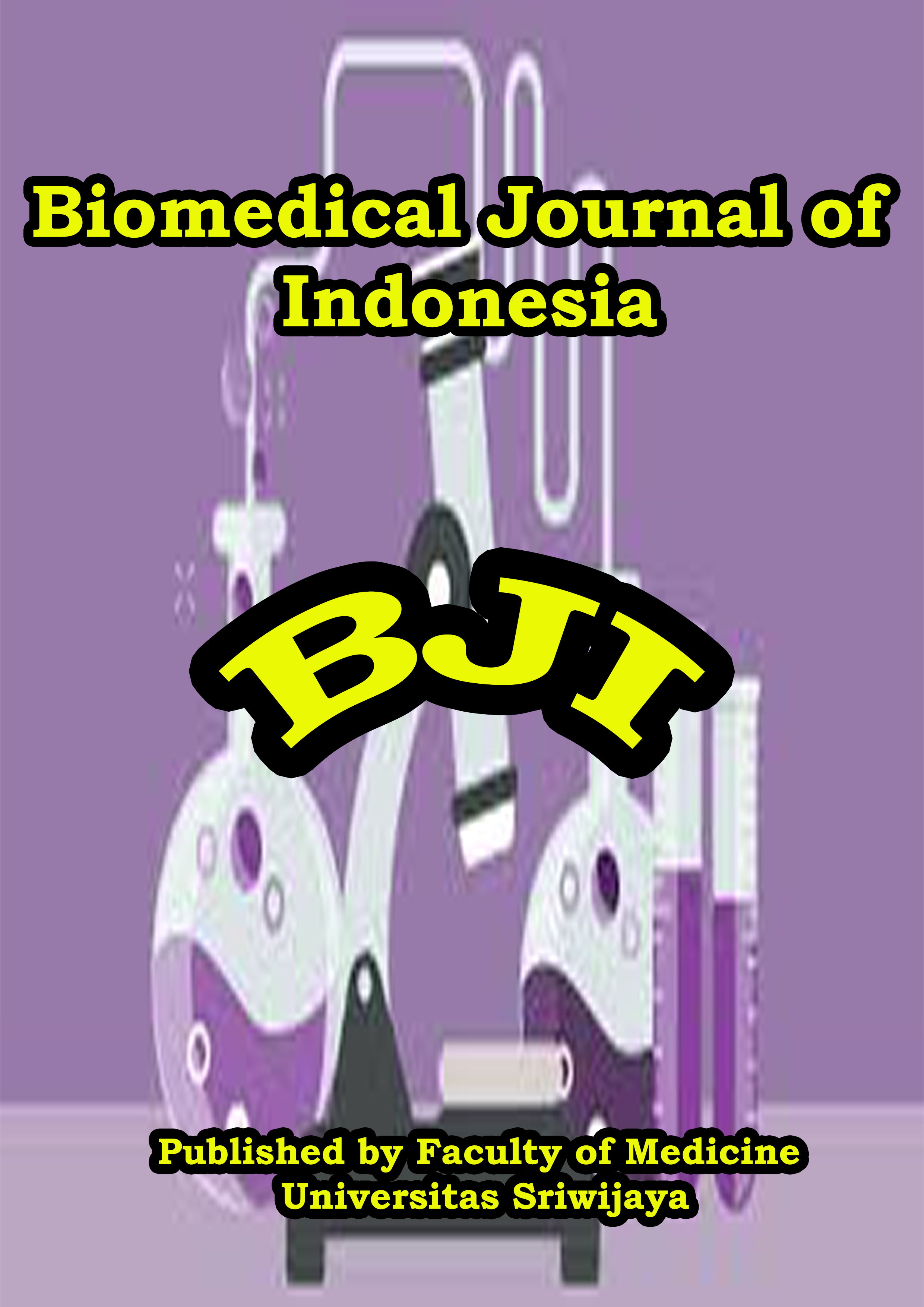Correlation Between Pharyngeal Residue With Food Consistency In Neurogenic Dysphagia Patients Using FEES At RSMH Palembang
Main Article Content
Introduction.
Disorders of swallowing process starting from preparation and bolus transportation called dysphagia. Supporting examination for dysphagia is Fiberoptic Endoscopic Examination of Swallowing (FEES). Aims to determine correlation between pharyngeal residues and food consistency in neurogenic dysphagia patients.
Methods.
Observational study using cross-sectional design. Data was collected from medical records of 32 patients with neurological disorders complaints swallowing who underwent FEES examination at RSMH January 2021 to July 2022. Statistical analysis using SPSS 24.0.
Results.
Participants was 32 patients with neurogenic dysphagia with the most male sex, 19 patients (59.4%), the most age group ≥ 60 years, 17 patients (53.1%). 18 patients had comorbidities (59.4%) with the highest number hypertension 15 patients (50%). Highest leakage in water group with 9 (37.5%) out of 24 experiments while in the filtered porridge group 12 (37.5%) out of 32 experiments. Highest penetration occurred in water 41.7% and filtered porridge 40.9%. Highest aspiration in filtered porridge was 34.4%. Somers’ d correlation test obtained p value 0.028, there was significant correlation between types of food and degree of residual valleculas, and the strength was very weak (ra value: 0.138). The piriform sinus region, obtained p value 0.014, there was significant correlation between type of food and degree of residual piriform sinus and the value of the strength also very weak (ra 0.153).
Conclusion.
There is significant correlation between types of food and degree of residual valleculas and piriform sinuses. As food resistance increases, the residual degree of valleculas and piriform sinuses will also increase.
Disorders of swallowing process starting from preparation and bolus transportation called dysphagia. Supporting examination for dysphagia is Fiberoptic Endoscopic Examination of Swallowing (FEES). Aims to determine correlation between pharyngeal residues and food consistency in neurogenic dysphagia patients.
Methods.
Observational study using cross-sectional design. Data was collected from medical records of 32 patients with neurological disorders complaints swallowing who underwent FEES examination at RSMH January 2021 to July 2022. Statistical analysis using SPSS 24.0.
Results.
Participants was 32 patients with neurogenic dysphagia with the most male sex, 19 patients (59.4%), the most age group ≥ 60 years, 17 patients (53.1%). 18 patients had comorbidities (59.4%) with the highest number hypertension 15 patients (50%). Highest leakage in water group with 9 (37.5%) out of 24 experiments while in the filtered porridge group 12 (37.5%) out of 32 experiments. Highest penetration occurred in water 41.7% and filtered porridge 40.9%. Highest aspiration in filtered porridge was 34.4%. Somers’ d correlation test obtained p value 0.028, there was significant correlation between types of food and degree of residual valleculas, and the strength was very weak (ra value: 0.138). The piriform sinus region, obtained p value 0.014, there was significant correlation between type of food and degree of residual piriform sinus and the value of the strength also very weak (ra 0.153).
Conclusion.
There is significant correlation between types of food and degree of residual valleculas and piriform sinuses. As food resistance increases, the residual degree of valleculas and piriform sinuses will also increase.
Keywords:
Neurogenic dysphagia
Pharyngeal residue
Fiberoptic endoscopic examination of swallowing

